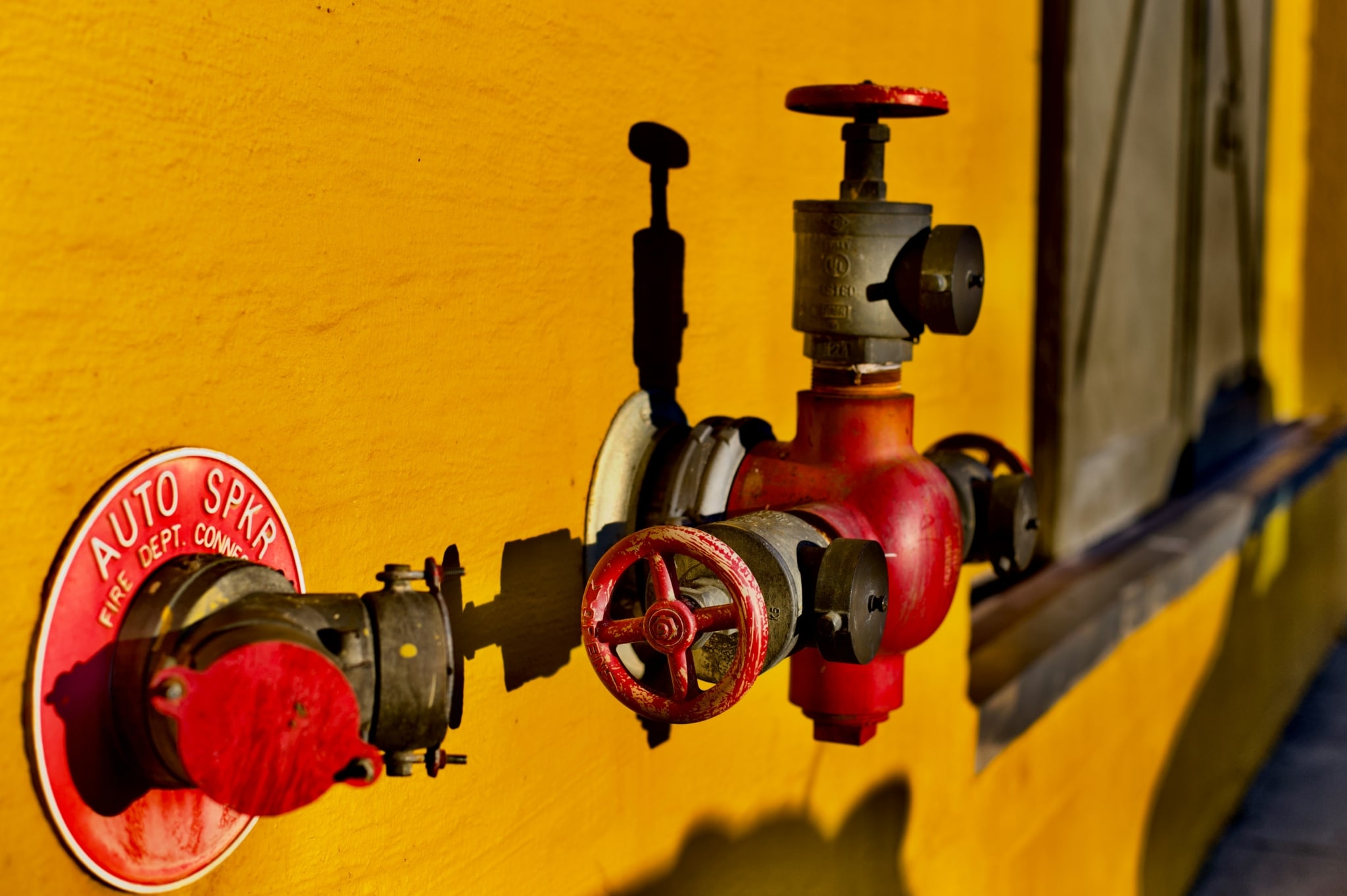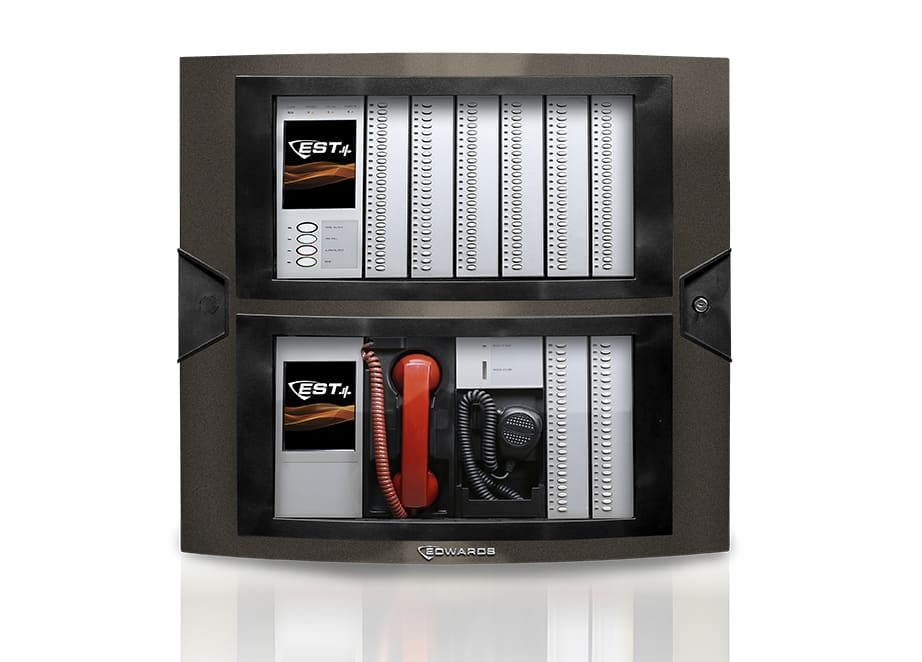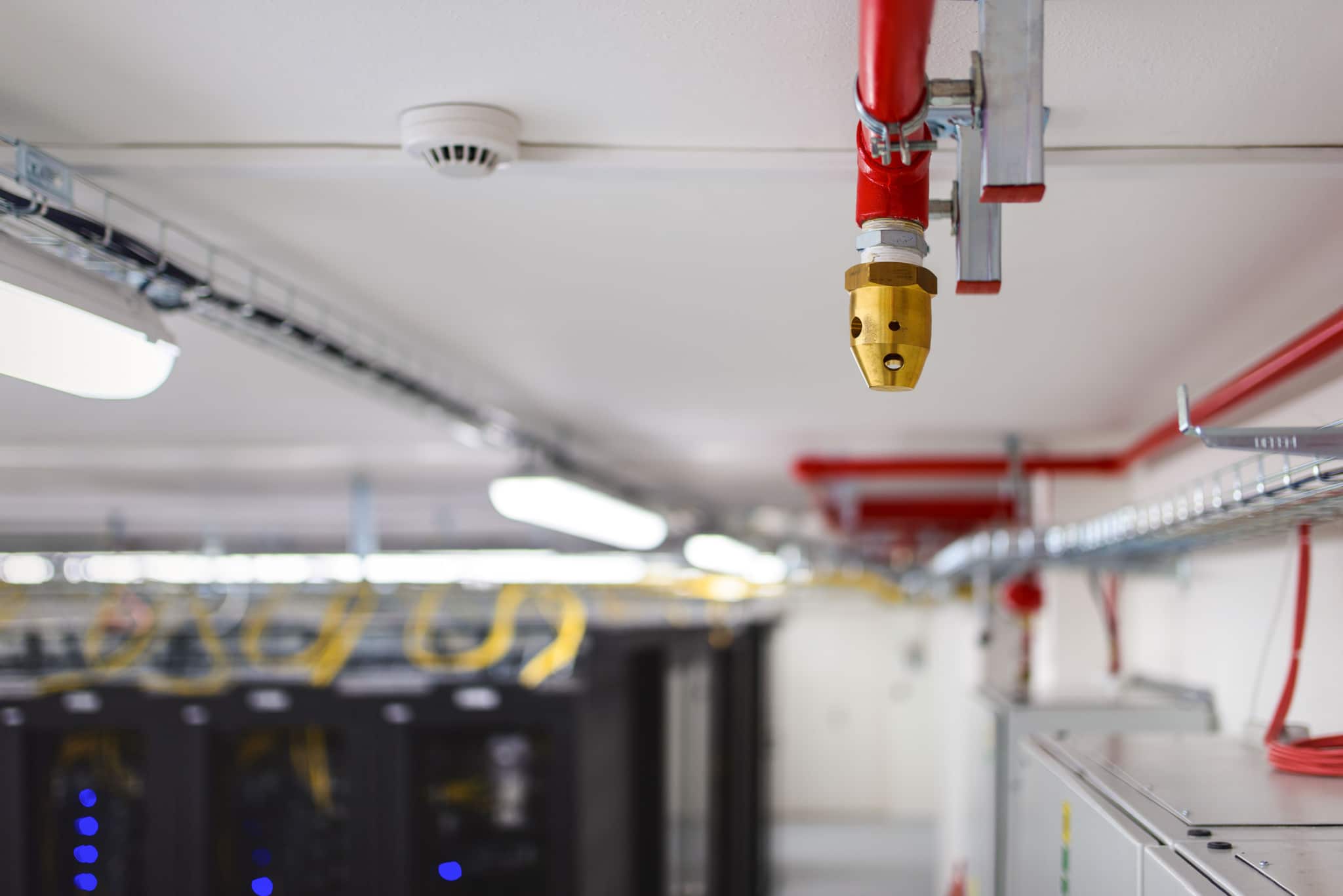
Photo Source: Photo by Kevin Butz on Unsplash
The importance of an effective fire sprinkler system cannot be overstated when it comes to maintaining a building’s safety and integrity. But for many older buildings, there’s an unseen risk that could have costly implications: pipe corrosion.
Pipes that are 20-30 years old are particularly susceptible to deterioration, potentially leading to dangerous leaks and expensive repairs. Fortunately, there’s a modern solution that can significantly extend the life of fire sprinkler systems and save you money in the long run.
MORE ON SAFETY: Advanced Fire Alarm System for Facebook
The Hidden Threat of Pipe Corrosion in Older Buildings
Aging infrastructure presents an ongoing challenge for building owners and facility managers. One of the most overlooked issues in older buildings is the corrosion of fire sprinkler pipes. Over time, the combination of moisture, oxygen, thinner wall piping, and the natural aging of materials causes metal pipes to deteriorate. This can lead to potential leaks that can disrupt daily operations, damage valuable assets, and create an environment of uncertainty and risk.
The cost of repairing or replacing these pipes can reach tens of thousands of dollars, especially if the corrosion goes unnoticed until it causes significant damage. The integrity of the building as a whole can also be compromised, leading to even higher costs. Leaks can cause water damage to walls, ceilings, and electrical systems while potentially contaminating stored goods, disrupting business operations, and, in worst-case scenarios, endangering lives.
What is Microbiologically Influenced Corrosion (MIC)?
One key contributor to pipe corrosion, particularly in fire sprinkler systems, is a phenomenon known as Microbiologically Influenced Corrosion (MIC). MIC occurs when bacteria in the system produce acids that break down the metal, accelerating the corrosion process.
This is a common issue in wet and dry fire sprinkler systems, where the presence of water combined with air can create the perfect conditions for these bacteria to thrive.
Without proper intervention, MIC can weaken pipes to the point where they fail, leading to disastrous leaks. Many building owners are unaware of this issue and its long-term implications.
The Solution: Nitrogen-Based Mitigation
One of the most effective solutions on the market is using nitrogen gas to inert the system to combat the damaging effects of pipe corrosion. The process involves reducing the oxygen levels inside the pipes. By replacing oxygen with nitrogen, you can effectively prevent MIC from occurring and extend the life of your sprinkler system by removing trapped oxygen within the pipe.
This technology is particularly valuable in older buildings or buildings that are drained and filled frequently due to tenant improvements which are more prone to pipe corrosion due to the age of their infrastructure. Nitrogen-based systems remove the oxygen that fuels corrosion, making them a win-win for both the people working in the building and the property owners who are invested in maintaining the building’s integrity.
How Does It Work?
The process of applying nitrogen to an existing fire sprinkler system is straightforward.
- For wet systems, nitrogen cylinders are used to inject nitrogen into the pipes when necessary, ensuring that the system remains inert and protected.
- For dry or pre-action systems, a nitrogen generator is installed to provide a continuous supply of nitrogen. This generator maintains an oxygen level of 1%-2%, which is far too low for corrosion-causing bacteria to survive.
Once the nitrogen system is installed, maintenance is relatively simple. In many cases, it requires little more than ensuring the nitrogen generator continues to function properly and replacing filters annually for dry systems. The cost of installation for a wet system is typically between $5,000 and $7,000, while nitrogen generators for larger systems can cost between $25,000 and $130,000, depending on the building size and complexity.
Why You Should Act Now
The biggest advantage of this technology is its ability to prevent future leaks before they occur. Rather than waiting for the inevitable leak to wreak havoc on your system, property, and budget, investing in nitrogen mitigation provides proactive protection against pipe corrosion and long-term costs.
The alternative is often far more expensive—waiting until corrosion has already damaged the pipes can lead to costly repairs or, in some cases, full system replacement, which can easily exceed $70,000.
If you manage a building that’s over 40 years old, chances are your fire sprinkler system is a prime candidate for corrosion. In California, where many buildings from the ’80s or earlier are still in use, this technology is increasingly sought after. Nitrogen mitigation can safeguard against future problems and keep fire sprinkler systems fully functional when you need them most.
The Bottom Line: Saving Money and Protecting Your Investment
Pipe corrosion cannot be ignored, especially in buildings with aging infrastructure. By implementing a nitrogen-based mitigation system, you can add years to the life of your fire sprinkler system, reduce the risk of costly repairs, and elevate the safety of everyone in your building.
Whether you’re proactive in preventing leaks or reactive to ongoing problems, nitrogen mitigation offers a cost-effective solution that provides long-term benefits. It’s an investment that not only protects your building but also safeguards your bottom line.
For more information on how nitrogen-based corrosion mitigation can benefit your facility, contact Sciens today. Let us help you extend the life of your fire protection systems and prevent the costly consequences of pipe corrosion.




